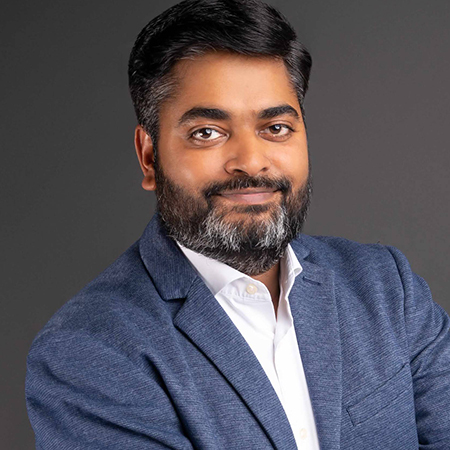Assimilating into the new paradigm, ensuring congruency between departments, maximising returns on investments will require CIOs to get their priorities in order, writes Abhay Pandey at MAST Consulting.
The uptake of technology has not only revolutionised business processes but also blurred the lines of distinction between roles. CIOs who merely concerned themselves with IT processes are now increasingly making strategic decisions that have deep implications for bottom lines and, by extension, their organisations’ prospects. In the last decade, while the hyper-digitalisation punctuated by unprecedented events such as the pandemic gradually elevated a CIO’s standing in the organisational hierarchy, it did not come without added responsibilities. The findings from surveys of Middle East CIOs attest to the same.

According to IDC research, about 49% of regional CIOs have expedited their digital agendas by at least one year following the pandemic outbreak. About 14% of the surveyed have fast-forwarded their digitalisation by almost two years. Such discretionary pursuits have since become obligatory, with CIOs across the business ecosystem not only embracing the change but also spearheading it. That said, assimilating well into the new paradigm, ensuring congruency between departments, and maximising the returns on investments will require CIOs to get their priorities in order.
Policymakers in the developing world opine that AI is the new space race. The developments following the advent of ChatGPT, especially from big tech such as Microsoft and Google, only substantiate that notion. AI has made inroads into all facets, from front-office interactions to go-to-market strategies of businesses, irrespective of sectors. That, in turn, has reinforced the need for CIOs even in conservative sectors such as real estate.
For CIOs, AI proliferation calls for the adoption of systems that simplify and harmonise relationships between people, processes, and technologies. The efficacy of AI output hinges on training data, the integrity of which should be a priority.
Technology absorption has been a forte of growth economies such as the UAE and Saudi Arabia. However, the uptake has been accompanied by a sharp rise in cyberattacks. Between mid-2021 and mid-2022, organisations in the UAE and Saudi Arabia witnessed more cyberattacks than their peers in other GCC countries, as per Group-IB.
Alongside phishing and ransomware, insider threats have increased too. This status quo necessitates managed security operations characterised by enterprise-level threat detection and real-time incident response capabilities. CIOs can explore sophisticated ZTNA solutions, as well as security automation, to ensure they are a step ahead of attack vectors and bad actors.
Contrary to popular belief, automation is not about taking humans out of the equation; it is about augmenting human capabilities. In fact, discerning CIOs are unlocking higher efficiencies by embracing the middle ground: Human-in-the-loop automation, where system operators can fine-tune and course-correct the algorithm’s decision-making.
Operational, process, and security automation have excelled in handling time-consuming, repetitive, and laborious tasks while allowing operators to focus on value creation instead. That said, globally, automation continues to be plagued by the perception gap, the phenomenon where potential suitors are irrationally hesitant to embrace automation fully, fearing the probability of losing their jobs to it in the future.
A CIO’s fundamental duty is toward data and information. So, in light of scalability and cybersecurity concerns in conventional cloud computing, CIOs must push the envelope. As opposed to cloud-enabled and cloud-based solutions, cloud-native alternatives offer higher scalability, flexibility, and programmability required to stay in sync with evolving circumstances in the business environment.

Fortunately, CIOs are highly inclined toward cloud nativity, with developments and deployments growing by 467% and 327%, respectively, since 2019, as per a study. Parallelly, CIOs must emphasise private cloud, which gives greater control over data than public solutions, besides providing more security and privacy.
Though superseded by cloud solutions on multiple fronts, including security and scalability, edge computing is not without inherent benefits. Edge ecosystems have utility if CIOs are harnessing data locally and seeking access to it at a network level. They also make a compelling case for adoption in areas where internet connectivity continues to be intermittent and unreliable — applicable to some parts of the Middle East.
Edge systems allow operators in such areas to overcome likely latency in remote cloud computing. In other words, edge computing can play a pivotal role in geographical diversification and decentralisation of value creation and business opportunities.
End-user experience garnered a 72% consensus as a top-five CIO responsibility in the aforementioned survey. A big chunk of the customer-experience responsibility has fallen into the hands of CIOs in recent years due to the role’s strong correlation with digital transformation. Many perceive digitalisation as a prerequisite to good CX. Data analytics-led personalisation of customer engagement across channels and end-to-end processes can enable marketing teams to increase customer lifetime value and command loyalty in return. CIO functions such as IT operations and policies are critical to that effect.
The growing frequency and sophistication of cyber-crimes have prompted governing bodies to ramp up and mandate regulations for the private sector. The lack of compliance with such regulations often invites punitive action, including but not limited to fines and delicensing. Fortunately, compliance also accompanies business incentives such as creditworthiness and trust, transparency ratings.
So, it is not in the least bit surprising that over 73% of CIOs believe that data governance and compliance is their top-five responsibility. In the UAE, companies can comply with frameworks such as the National Cybersecurity Strategy and the Personal Data Protection Law to enrich their competitiveness.
In spite of their growing strategic significance, CIOs must remain rooted in the collaboration culture that initially strengthened their role. With digital-first experiences permeating business and industry, CIOs will increasingly find themselves at the intersection of technology and people.
Though seemingly an added weight on one’s shoulders, fostering a collaborative culture will subsequently and gradually pay rich dividends by simplifying a CIO’s role. Such an ecosystem also ensures that new employees can seamlessly assimilate into it and maximise their output with the least downtime.
By and large, a new dawn is breaking for CIOs in the Middle East as the region finds itself holding the right end of the digitalisation stick. However, technological advancements have concomitants such as sustainability and climate actions, one cannot embrace one and ignore the other.
CIOs, by virtue of their value-chain expertise and product-life-cycle involvement, are well-equipped to concurrently and methodically embed ESG into corporate strategies. With climate-action advocacy gaining ground, such pursuits cannot afford to be on the back burner. They should be ingrained in the corporate culture, where CIOs now find themselves in a decision-making capacity.


